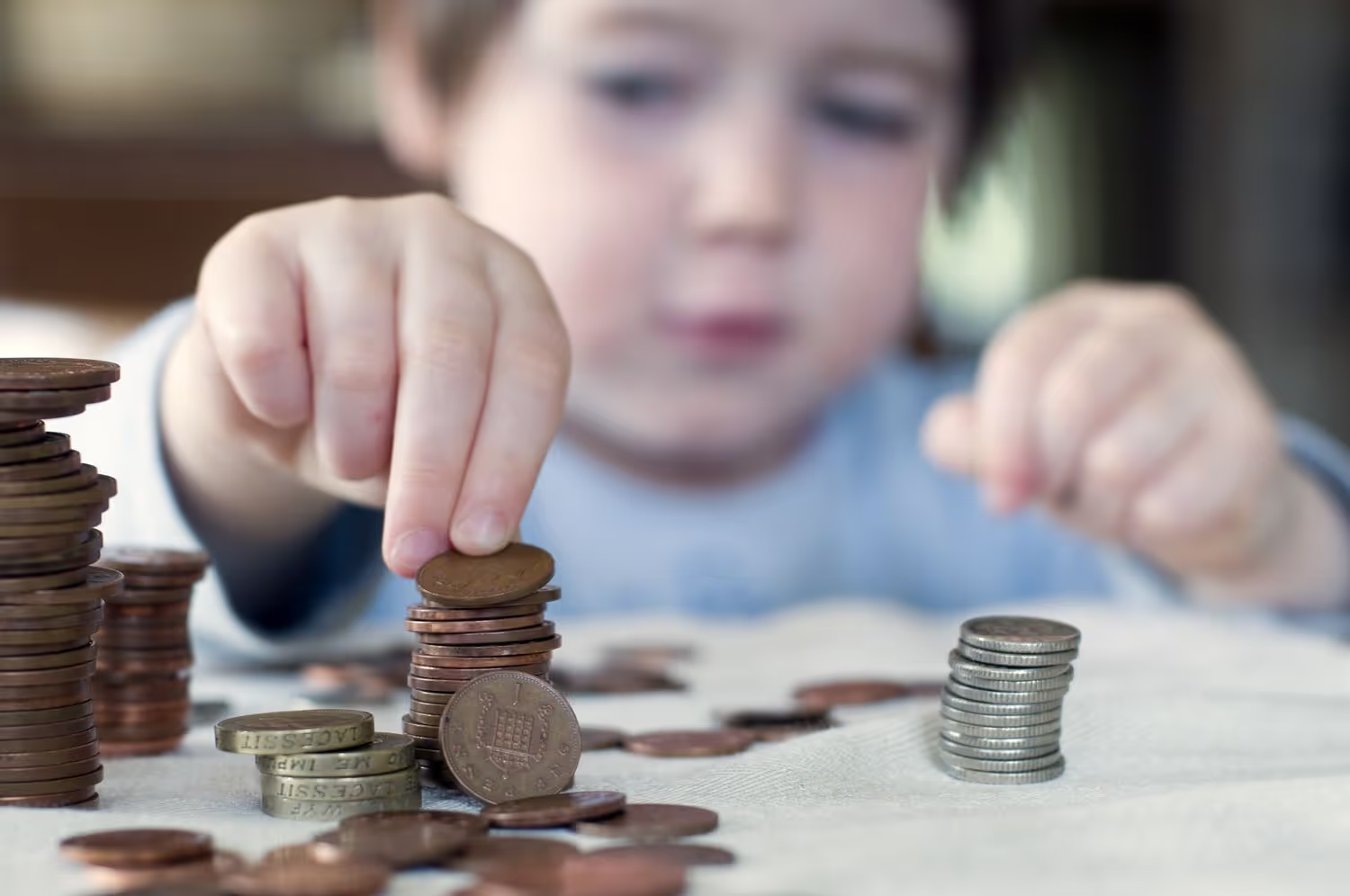Negative Reinforcement During ABA Therapy
Learn how to use negative reinforcement during ABA therapy in this guide.

What is negative reinforcement?
When someone is deprived of a stimulus that's disapproved of due to their behavior, it's known as negative reinforcement. Because the stimulus is taken away, the resulting behavior from the action is desirable.

However, in a situation where behavior leads to an unpleasant stimulus and a barrier to a goal they hope to achieve, it's known as a negative state of reinforcement.
Applied behavior analysis, or ABA, teaches that the stimulus is anything intentionally removed from a child that served as the source of their unwanted behavior.
Examples of this are many, including loud sounds, scents, a specific person, or even simple objects.The total symptoms of negative reinforcements are observed when the stimulus is taken away and the child exhibits favorable behavior.
Negative Reinforcement in ABA Therapy
Within ABA therapy, the term negative has different connotations. It's similar in meaning to what's used in arithmetic, taking away something instead of describing it in a pessimistic or bad state.
When someone takes a shower to rid themselves of stench, they're in the process of subtracting odor for something more pleasant and will last for a couple of hours.
When contrasted with ABA, the act of the shower was reinforced negatively by neutralizing the poor smell. Just one example of the way negative reinforcement works.
Another is when doing something as simple as turning off the lights during the evening hours.
Due to the light being taken away, it was therefore subtracted, resulting in improved sleep with fewer irritations from the eyes.
Because the lights off can help reduce a distraction that deprives one of sleep, the person in question will turn it off again during sleeping sessions from that point forward. But what about sound?
It works the same way. When there's too much of a racket coming from a television panel, turning off the TV equals subtraction of both light and noise pollution.
With the room quieter and less noisy, it's easier to have REM sleep and not be bothered at night by loud TV commercials. Again, the next course of action for bedtime would see one powering off the TV before climbing into bed.
As a whole, negative reinforcement shouldn't be thought of as something bad or wrong. It's a natural occurrence in many people's lives, even with no disorders.
Everyone experiences negative reinforcement in some way, from earth childhood to later on in one's elderly life. On the other hand, positive reinforcement is viewed as rewarding, providing someone with the accomplishment of a goal, or showing desirable behavior.
Yet the negative can be equally rewarding at times by ridding someone of a stimulus that was a hindrance to their progress in becoming a better person. Here are additional examples of negative reinforcement:
- Making wet hands dry - After washing the hands, a child sees them wet. Rubbing them with a towel works best at removing water, so they continue to henceforth use the towel to maintain dry hands. In this case, negative reinforcement lies in the fact that their hands had water on them before being rubbed with a towel. The act of using the towel takes away moisture.
- Pressing the horn on a vehicle - At a traffic stop, a light suddenly turns green. A car directly in front of another driver refuses to move. From having done it before, the driver understands that honking the horn will get the front one to accelerate. Blasting the horn, knowing that using it as needed is negative reinforcement is applied.
Negative vs. Positive Reinforcement
When gauged with negative reinforcement, positive reinforcement happens when a stimulus outside of the environment is provided when good displays of behavior are shown.
The inclusion of the stimulus can motivate the person to alter their behavior when the opportunity arises. Overall, both negative and positive reinforcement have many similarities.
Both are equally rewarding as means of providing a child with something that they want. On the other hand, they also can take away undesirable aspects for the betterment of their conduct.
The result or consequence of a child's conduct is in their favor when negative reinforcement is used in an ABA therapy session. If they behave badly when a stimulus is taken away, then it cannot be labeled as negative reinforcement.
Using Negative Reinforcement Incorrectly
Negative reinforcement isn't always possible, especially when children show poor behavior that they're able to get something out of. The confusion is predicated on how it's doable to confuse a negative response to the other definitions of the word.
Consider when a child has a temper tantrum, such as an instance of candy being taken from them but the parent caving in by quickly providing it to them in the same setting.
Although the parent's action can be viewed negatively, it's not exemplary of negative reinforcement.
On the contrary, the behavior with positive reinforcement since the child eventually received the candy.It's noted that the parent's decisions were reinforced negatively, not their child's actions.
The parent was aiming to make the tantrum cease, which in itself is an aversive stimulus. This is an environmental reaction that causes stress and uncomfortable feelings.
In the presence of a behavioral therapist, such behaviors and antecedents are noted, as are the consequences for both the child and parents. This will benefit the parents during the therapy on ways for them to shy away from being lured into using negative reinforcement when it's inconspicuous to them.
When Negative Reinforcement is Tangible
Items which cause negative reinforcement during ABA therapy are easy to find. For small children with ASD and those without, toys are a staple in their young lives.
They provide quick and easy entertainment when there's nothing else around, such as during long trips on the road or when taking them out while parents run errands.
Toys are considered to be tangible items, as are treats that are high in sugar and easy to eat with the hands.
Other tangible items are electronics, things such as portable video games, tablets, and smartphones.
Therapists can use these tangible items to their advantage while in therapy, just as long as the tangible benefit aligns with what's learned from the child being thoroughly assessed.
Behaviors that are desired by the parents and therapists of autistic children have much potential to give good results in therapy. However, this won't be helpful to every child and certainly won't benefit them in every situation that they face.
Some kids like to sleep and listen to different types of music or appealing sounds. Other non-tangible rewards could be walking in a familiar place, such as an area with a pretty view.
The therapist is ultimately responsible for studying a child's ability to learn so that reinforcement is applied to their conduct.
Several decades ago, medical experts determined social reinforcement provides great improvements in the school grades of students that previously had problems.
Their social reinforcement manifested after being provided with tangible reinforcement. Additional studies back up the abilities of therapists in fighting tangible reinforcement through social means.
Make Preparations for Negative Reinforcement
In like manner to positive reinforcement, negative can be given without preparation or thought, a primary cause of antisocial behavior that's unknowingly encouraged.
Knowing this, a behavioral therapist must remember that negative reinforcement can occur when it's not intentionally planned or expected.
While events take place day to day, reinforcement of some kind will come from behavior, oftentimes spontaneously. Unfortunately, this all but guarantees that behavior will occur sometimes, later on, repeat instances.
It can weigh on the therapist's aims and expectations concerning the behaviors that attach to a child's negative reinforcement.Because of this cause, using negative reinforcement while ABA therapy must be carried out with careful planning.
Using it poorly can promote unwanted behavior. Therefore, therapists must understand all the right behaviors that are to be reinforced by them and taught to parents for use at home.
If no such plan is carried out, maladaptive behavior should be expected.The best way to ensure that maladaptive behavior doesn't occur, carefully assessment of data should be prioritized.
Within it should be reports of observed antecedents, behaviors, and the consequences from them. The objective is to have patterns identified, those which are quick and good at reducing behaviors that are targeted. From here, intervention is the next step.
References
Recent News
Related articles

Working With Autistic Children: 10 Career Options
Want to work with autistic children? Here are 10 career options for you to consider.

What Is The Age Limit For ABA Therapy In Indiana?
Find out what the age limit is for receiving Applied Behavior Analysis (ABA) therapy in Indiana.

What Is The Age Limit For ABA Therapy In Arizona?
Find out what the age limit is for receiving Applied Behavior Analysis (ABA) therapy in Arizona.

Verbal Operants In ABA: Definition & Examples
In Applied Behavior Analysis, verbal operants are a type of verbal behavior.

Token Economy: Examples & Applications in ABA
A token economy is a procedure that was developed to help reduce maladaptive behaviors and increased desire behaviors by providing a tangible conditioned reinforcer.

Trigger Analysis In ABA: Definition & Examples
Trigger analysis is a segment of ABA therapy where children are taught by therapists to pinpoint the behaviors and emotions that happen before, during, and after an event that takes place.

Variable Ratio Schedule & Examples
A variable-ratio schedule is a random reinforcement where responses are reinforced following varied responses afterward.

Task Analysis In ABA Therapy: Examples & Strategies
Task analysis is a process of teaching that divides complicated activities into sections involving easier steps for students to more easily take.

Stimulus Equivalence In ABA: Definition & Examples
Stimulus equivalence shows how relationships can manifest among different types of stimuli in different situations.

Speech Therapy For Autism: ABA vs. Speech Therapy
ABA therapy can help individuals with speech impairments learn to better identify and utilize the language skills they already have.

Stimulus Control Transfer ABA: Definition & Examples
Stimulus control is defined as an expression used to detail circumstances where a behavior is triggered by the existence or absence of a stimulus.

Social Validity In ABA: Definition & Examples
Social validity is the acceptance of interventions concerning behavioral changes.

